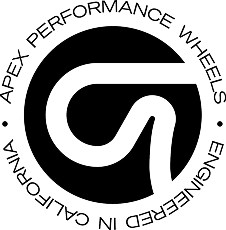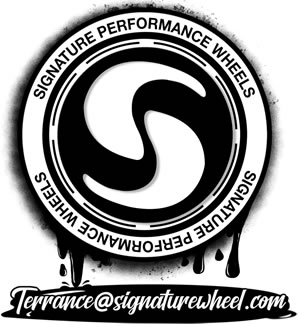Here was my step-by-step process:
- turn wheel 90 degrees in each direction in order to have access to the trim panels on the side of the wheel. remove the small trim panels on the back of the steering wheel that will expose 2 bolts (1 on each side). These bolts hold in the air bag. Return wheel to centered position.
- pop trunk. disconnect negative terminal of battery and stow away so that the terminal will not come in contact with the wires. LEAVE the trunk and driver door OPEN! It is all electric switches, so if you close after disconnecting, you won’t be able to open it. Wait 10 minutes or so for residual battery to drain. This is a piece of mind step to ensure that when you remove the airbag it doesn't go off.
- return to the cab. using a 10 mm socket, remove the two airbag retention bolts. with that, the airbag should be free to remove. there will be three harness plugs connected to the airbag. one black, one pink, and one purple. The black connector has a red lock - pull the lock backwards from the connection and press down the black center tab while pulling apart. This is the horn. The pink and purple plugs will have orange tabs on either side of the switch. use a small flat head or pick to lift on both sides of the orange tabs while pushing away from the airbag. the connectors should pop out and the airbag will be completely removed now.
- to remove the steering wheel controls wiring harness there will be a yellow multi-wire connector at the top. inside the connector is a red tab on the bottom center that is the connector lock. that will need to be pulled back in order to depress the tab, allowing you to remove the harness from the steering column's connector.
- using a T50 socket and breaker bar, remove the steering wheel center bolt. from the factory, thread locker is applied so some may be harder than others to remove. i braced the bottom of the wheel with my legs to try and reduce force on the steering column. it took some force, but it did break free.
- with the steering wheel bolt removed, the wheel should come free - just gently pull towards yourself from the 3 and 9 positions on the wheel.
- DO NOT MESS WITH THE CLOCK SPRING. just leave it be
- To remove the trim and buttons from the OEM wheel:
- Start with the back. Using a T15 bit, remove all the exposed screws on the back of the panel. in the 6MT cars, the paddle shifters are replaced with a cool Easter egg (check it out for yourself, both sides are different). These rim panels are going to need to be removed too, exposing 1 screw on each side that is the mounting method for the front steering wheel controls.
- The back trim piece should come off, with all screws removed, with ease. There will be a small wiring junction box that is retained in the back trim by a tab on the top. i just pulled it forward and up and it came right out.
- the wiring harness for the controls are mounted using plastic tabs. i used needle nose pliers and my T15 screwdriver to depress the tabs and pop them out of their slots. 4 in total. easy and straight forward.
- the front control panel/switches/trim are all one piece. in order to separate them from the wheel, you should first unplug the steering wheel heater connector. same style as the horn connector on the airbag. with the front of the steering wheel facing away from me, i put my thumbs on the back of the "V Mode" and "PTM" button/switch and began to apply pressure. after enough effort, and some pulling/wiggling from the front one side at a time, the whole harness came right out.
- Now, you should be able to turn your attention to the aftermarket steering wheel. This is where things got tricky for me.
- Because the Blackwing's bottom trim is different than the standard CT4/5's and is the only model with the "V Mode" and "PTM" button/switch, the replacement wheel needed some modification.
- I realized that that trim piece had some plastic mold supports that were interfering with the dense foam of the steering wheel mold. Also, the data plate at the bottom of the wheel has about a ¾” long cylinder that pokes out the back of the trim. I had to remove a “U” shaped channel at the base of the wheel to make room for this. Use the factory wheel as a reference point to see what it needs to look like.
- I used a brand-new blade on a utility knife to begin trimming material from the wheel. Piece by piece. Very slowly and methodically, test fitting the front controls and back panel to see my progress. I also used the original steering wheel, and its foam supports, as reference to see where the replacement one had some fat that could be trimmed.
- I took my time with this (45 minutes or so) to ensure that I wasn’t trimming too much, to the point it would expose any unfinished part of the wheel when reassembled.
- When happy with the test-fitting, begin by replacing the two screws (one each side) holding in the control switches. None of this needs to be gorilla tight. Just tight enough. This should also ensure the switches are seated properly in the cubbies of the steering wheel. Replace the paddle shifter covers before putting the back trim on.
- Replace the back trim panel using all the screws previously removed. I first put in each, only beginning the threads. I then slowly tightened them all little by little, like lug nuts, to pull together the trim evenly. I didn’t want to crack anything. Remember to replace the black wire junction box in its compartment on the back trim piece.
- With the trim all connected again, you should be able to pop the wiring harness tabs back into their places.
- The new wheel should be ready for install now.
- The “drive shaft” (electric power steering, so not really a drive shaft) is splined and has a locating shaft at the 6 o’clock position that only allows the wheel to go back on one way. Gently align the new wheel with the shaft and clock spring and shimmy it into place, being careful to not move the clock spring behind it (align the wiring harness connector with the appropriate slot in the wheel. Once firmly seated, go ahead and reconnect the yellow main wiring harness.
- Now for the steering wheel bolt. Use the same T50 from before and begin to thread it back in, making sure its not cross threaded. You can add some more medium strength thread locker, but I never have (the old thread locker schmoo provides enough resistance when it goes back together that I am confident with it). My C7’s steering wheel was just as tight when I took it off 2 years later as when I put it on. Using a 3/8” torque wrench, I tightened the bolt to 35 ft-lbs.
- Ensure the heated steering wheel connector is tucked down into the bottom trim and the harness is out of the way. The airbag can now be reconnected. I connected the pink and purple first, they just pop right back on and automatically lock into place. The horn connector is next. After plugging in, press the red locking tab back into place. Return the horn into the wheel and check the sides of the wheel to ensure the bolts will align. Insert both bolts and finger tighten. Once both are in, tighten them in a similar manner as lug nuts. These don’t need to be gorilla tight either, just tight enough. Probably 20 ft-lbs. They weren’t crazy tight to begin with. Replace the trim panels that cover these bolts.
- You are now ready to reconnect the battery. Attach and tighten the negative terminal. Return to the cab to check function of all buttons.
- After disconnecting the battery, the dash will instruct you to lower and raise all the windows. Follow the prompts. Check all buttons are functioning properly. The heated wheel button will no longer operate, and I have not had any fault codes present themselves.
- Your install should now be complete! Enjoy your new wheel!
Let me know if you have any questions if you ever try to do this yourself!






